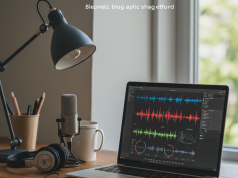The marketing landscape has undergone remarkable transformation in recent years. Traditional in-person events once dominated engagement strategies, but technological advancement and shifting consumer behaviors have changed everything. Today, the most successful brands embrace hybrid event marketing—a powerful approach combining the immersive nature of physical gatherings with the accessibility of virtual experiences.
This evolution hasn’t replaced traditional events but enhanced them. By integrating digital elements with in-person interactions, marketers create more dynamic, inclusive, and measurable experiences that seamlessly fit within broader inbound strategies.
Understanding Hybrid Event Marketing
Hybrid event marketing goes beyond simply livestreaming an in-person gathering. It creates purposefully designed experiences that engage both physical and virtual audiences simultaneously, with each group receiving tailored value.
The approach acknowledges different attendance preferences while maximizing reach and engagement. Physical attendees gain hands-on interaction and networking opportunities, while virtual participants access content conveniently without travel constraints.
This dual-approach naturally complements inbound marketing principles by prioritizing audience needs and creating valuable experiences that attract rather than interrupt potential customers.
Why Hybrid Events Excel in Inbound Strategy
Hybrid events perfectly align with inbound marketing’s core philosophy of attracting prospects through valuable content and experiences. They build upon this foundation in several key ways.
Extended Reach and Accessibility
Physical events inherently limit attendance based on venue capacity, location, and travel restrictions. Hybrid formats break these barriers, connecting with audiences regardless of geographic constraints.
This expanded reach means your valuable content influences more potential customers. Someone unable to attend your physical conference can still participate meaningfully from home, consuming your content and progressing through the buyer’s journey.
Enhanced Content Utilization
Hybrid events generate tremendous content opportunities. Panel discussions, presentations, interviews, and demonstrations all become valuable assets beyond the live experience.
These materials feed your content calendar for months afterward. They transform into blog posts, social media clips, email newsletters, and downloadable resources—all driving continued engagement with your brand.
Data-Driven Insights
Virtual components provide unprecedented visibility into audience behavior and preferences. You can track which sessions generate most engagement, where attendees focus attention, and how they interact with content.
These insights inform future marketing efforts, content creation, and sales approaches. Understanding precisely what resonates with your audience allows for ever-more-relevant offerings.
Core Elements of Successful Hybrid Events
Creating effective hybrid events requires thoughtful integration of several key components.
Engaging Both Audiences Equally
Successful hybrid events avoid treating virtual attendees as afterthoughts. They create parallel but equally valuable experiences for both audience types.
This might include dedicated moderators monitoring online questions, interactive polls that incorporate remote feedback, or digital networking rooms that complement physical conversations. The goal is ensuring everyone feels actively involved regardless of attendance method.
Technology Infrastructure
Your technical foundation must support seamless experiences. This means reliable streaming capability, intuitive virtual platform navigation, and integration between physical and digital components.
Invest in quality audio-visual equipment for clear transmission of presentations. Choose virtual event platforms that complement your specific event goals rather than forcing your vision to fit limited technology.
Content Designed for Multiple Formats
Effective content works across different consumption methods. Presentations should engage both in-room audiences and remote viewers, considering factors like visual engagement and participation opportunities.
Schedule breaks for both audience types, recognizing that screen fatigue affects virtual attendees differently than those experiencing physical events.
Implementing Hybrid Events in Your Inbound Strategy
Integrating hybrid events into your broader inbound approach requires strategic planning.
Pre-Event Engagement
Build anticipation through content that previews event value. Create blog posts introducing speakers, share snippets of upcoming presentations, or host pre-event webinars that establish foundational concepts.
Develop registration processes that gather meaningful information while remaining friction-free. This data helps personalize follow-up content and nurture relationships after the event concludes.
During-Event Experience
Focus on creating moments that transcend the physical/virtual divide. Facilitate connections between all attendees through shared experiences, whether collaborative problem-solving sessions or interactive demonstrations.
Capture content actively during the event. Beyond recording sessions, gather testimonials, conduct impromptu interviews, and document behind-the-scenes moments that become valuable post-event assets.
Post-Event Nurturing
Transform event content into ongoing engagement opportunities. Segment attendees based on their interaction patterns and interests, then deliver personalized follow-up materials that continue their educational journey.
Create community opportunities that extend relationships beyond the event itself. Private discussion groups, follow-up Q&A sessions, or implementation workshops maintain momentum and strengthen connections.
Measuring Hybrid Event Success
Effective measurement combines quantitative metrics with qualitative insights.
Track registration-to-attendance conversion rates for both audience types. Monitor engagement metrics like session attendance, question submission, resource downloads, and participation in interactive elements.
Follow longer-term indicators including content consumption patterns, sales pipeline influence, and relationship development. The true value of hybrid events often emerges weeks or months after conclusion as nurtured relationships progress toward partnership.
The Future of Hybrid Event Marketing
As technology continues evolving, hybrid events will become increasingly sophisticated. Emerging developments in augmented reality, virtual reality, and artificial intelligence promise even more immersive experiences that blur the line between physical and digital participation.
Forward-thinking marketers recognize that hybrid events aren’t merely a temporary adaptation but a permanent evolution in how brands connect with audiences. Those who master this approach gain significant advantages in relationship building, thought leadership, and market positioning.
By thoughtfully integrating hybrid events into your inbound strategy, you create powerful touchpoints throughout the customer journey. These experiences provide value, build trust, and establish connections that ultimately drive business growth through authentic relationship development.




